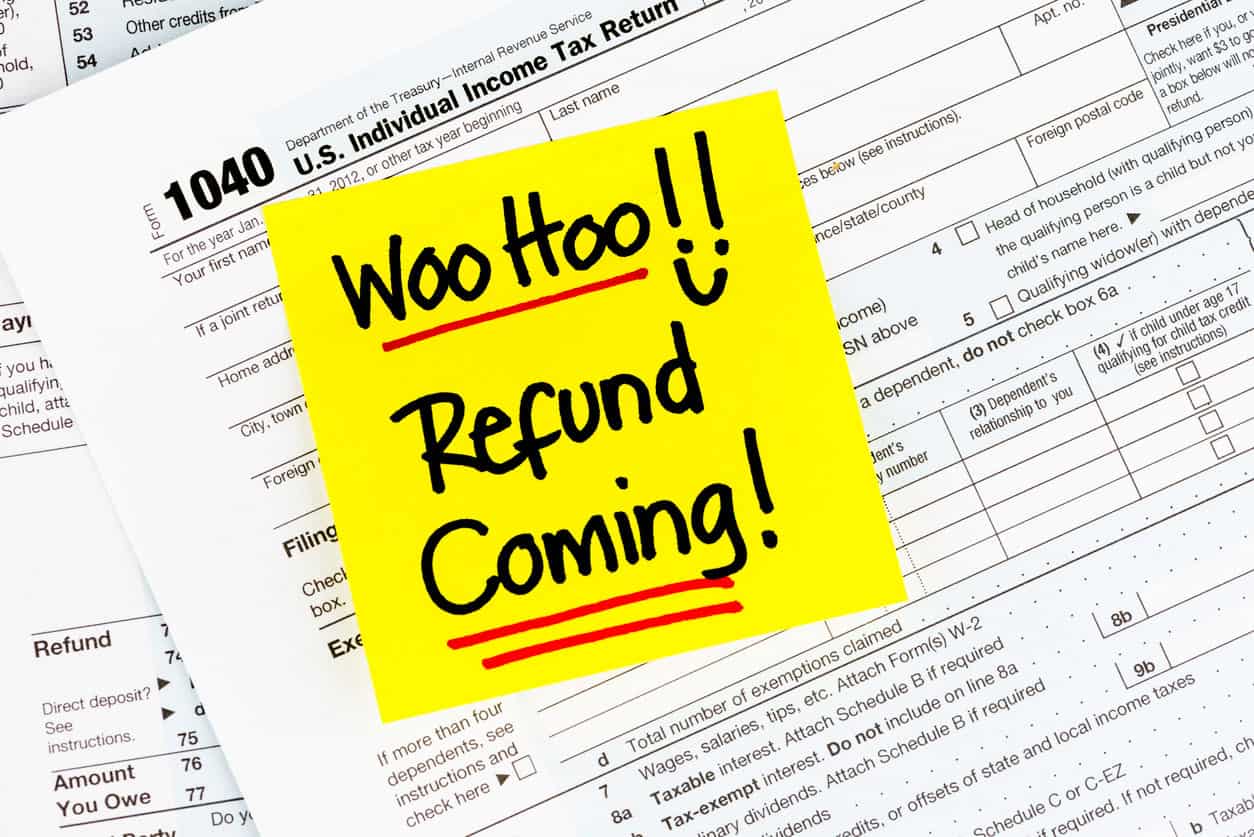
About 30% of taxpayers won’t receive a refund this year, but it might work out better for them if they did.
Tax refunds are bemoaned by obnoxious blowhards who will tell anyone who’ll listen that refunds “give the government a free loan.” As it turns out, they could give you a financial boost while preventing you from spending that money immediately.
If you’re among the 70% of U.S. taxpayers that the Internal Revenue Service expects to receive a refund this year, that’s money that hasn’t spent the last year burning a hole in your pocket. Last year, the IRS issued 112 million refunds, with the average refund coming out to $2,895. Considering that the IRS plans to take in 155 million returns this year, that means roughly 28% of all taxpayers don’t receive a refund around this time of year.
However, a survey by the folks at rewards shopping app Shopkick found that only 24% of taxpayers expecting a tax refund planned to save it.
Of those spending their tax refunds, 62% will put theirs toward paying down existing debt, and 36% will use their money to pay for everyday expenses. While the folks at finance site NerdWallet say that average tax refund could pay for a new transmission ($2,650), hot water heater ($1,944), home maintenance ($1,903) or an emergency room visit ($1,700), you actually have to save that money to use it on emergencies. A tax refund is a fine way to start saving, though.
“If you want to save for an emergency fund, then start by saving a small amount each week,” says Kimberly Palmer, personal finance expert at NerdWallet. “If you want to pay off debt, start by paying off a little each month.”
Last year, just 6% of U.S. adults who expected to receive a tax refund planned to splurge on something such as a vacation or shopping spree, according to a Bankrate.com report. The most popular uses for the money were saving or investing it (34%), spend it on necessities such as food or utility bills (29%) or paying down debt (27%). Millennials are the group most likely to save or invest their refund.
“It can be tempting to splurge with that refund, but saving it is so much smarter, said Sarah Berger, The Cashlorette at Bankrate.com. “Consider it an investment in yourself.”
While NerdWallet notes that putting a tax refund in the average savings account with a 1% yield can earn an extra $30 in interest, it’s at least adding to the average $2,500 that Americans save each year. But that $2,500 savings figure should tell you that most people are already not saving an amount equal to their tax refund.
A Capital One survey found that 12% of all taxpayers consider their refund free money that they can splurge with. Though 61% said they spent their last tax refund on things they needed, that same percentage said they preferred doing so to saving for later. So not only were they not saving, but 49% didn’t feel great about it afterward and 23% wish they could’ve spent their refund on things they wanted instead.
This is a shame, since that $2,895 refund could do so much more. If you invested in a fund pegged to the S&P 500 (and its average 11.6% growth rate), invested that same amount each year as $241.25 per month and kept doing so over 30 years, you’d have more than $724,000 once you finished saving, thanks to annual compound interest.
Even your retirement plan could work harder for you with a boost from your tax refund. NerdWallet notes that 15% of Americans hoped to increase their retirement contributions in 2018, though the Federal Reserve found that there’s a median of only $60,000 in the accounts of the 52% of U.S. families with retirement plans. NerdWallet says that increasing the monthly contribution to a retirement plan from 3% (with an employer matching that amount) to 5% would increase the payout from $623,000 to $825,000 after 37 years. Bump it up to 8%, and the payout rises to $1.14 million.
If you aren’t saving, at the very least you should be paying down debt so you can start saving immediately. MassMutual corporate vice president Tara Reynolds suggests that younger workers should attack their debt by starting with high-interest credit cards first. Those credit cards can have their balances transferred to cards with zero interest and can be paid off more quickly. Workers over 30 should keep hacking at high-interest credit cards and shoveling savings to retirement.
“If you’re struggling with card debt, don’t bury your head in the sand,” says Matt Schulz, CreditCards.com’s senior industry analyst. “Take some sort of action, even if it’s small.”

